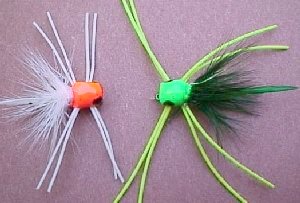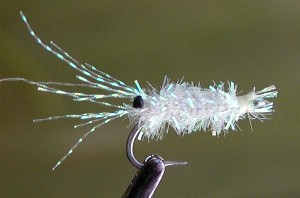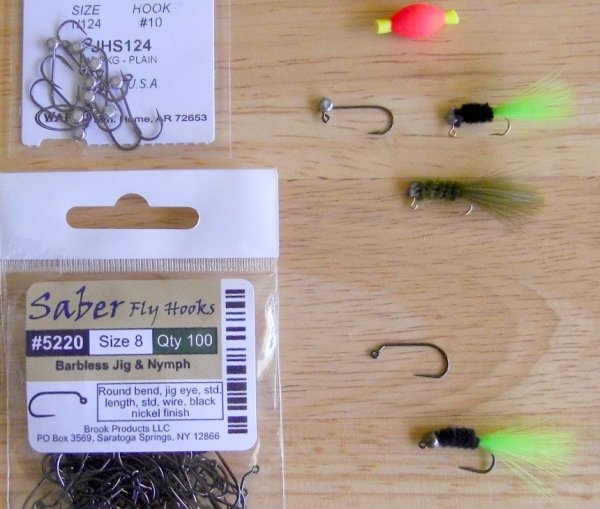Species: redfish, drum, sheepshead, bass
Remarks:
The most popular redfish flies of all time are the spoon flies. These originated with Cave's Wobbler in the early 80s. Jon Cave of Florida intended to combine the flash and action of the baitcaster's spoon with the lifelike imitation of a traditional shrimp fly pattern. Despite it's effectiveness on redfish, purists decried the Wobbler as heresy!
Kirk Dietrich of Louisiana discovered that by retaining the mylar body and eliminating all other features, the spoon fly was easier to cast and had more action. Over the last decade, tiers have searched for every possible means to make spoon flies easier to make. If the purists had a fit over Cave's Wobbler, imagine what they think about aluminum drink can metal cut to a teardrop shape and epoxied to a hook. Or, plastic fingernails superglued to a hook and covered with glittered enamel.
Despite all it's permutations, the mylar versions remain tops. They are flashier and more durable. Not to mention more aesthetic. Kirk's variety is a "wobbler", that is, the fly wobbles side-to-side when stripping. A few wraps of lead wire under the mylar and at the end of the shank insure the hook remains up. For the grass-filled shallow brackish ponds near Delacroix, Myrtle Grove, Golden Meadow, Chauvin, Dularge, and Hackberry, Kirk's Spoon is a must-have!
For more about Kirk Dietrich and his flies, check out his bio at the Fly Tying World web site.
Video:
Kirk has put together four (4) videos on tying his spoon flies. These cover the basics, as well as possible enhancments to this pattern. He also details his thoughts on why certain techniques are more effective. Here's the link to the first video:
https://www.youtube.com/watch?reload=9&v=FexkMwWC5Ag
Materials:
- Mustad 34007 stainless hook, size 2.
- 3/8" mylar tubing.
- lead wire size 20 gauge
- red thread
- 5 minute epoxy
- 30 minute (2 ton) transparent epoxy
- Best colors for mylar: gold, flashabou (gold/pearl), green, silver, root beer.
Instructions:
- Using a pair of pliers, make a series of slight bends in the hook until it assumes a somewhat "caddis" shape.
- Wrap thread base from eye back to halfway down bend of hook.
- Make 6 to 8 wraps of lead wire at end of shank and trim off.
- Cut 1 1/2" section of mylar and slide down shank from front until any unraveled endings are past thread.
- Secure mylar at bend with thread and knot off with a whip finish.
- Mix together a tiny amount of 5 minute epoxy. Using a toothpick, dab some epoxy into the mylar. Make sure to cover as much surface as possible, and especially towards the back. You now have about 3 minutes to work with.
- Place thread over mylar about 1/8" down from the hook eye, and make 3 to 4 tight wraps.
- With rough pair of scissors, trim off excess mylar covering the hook eye, then wrap thread over end of mylar to form head.
- By now, the 5 minute epoxy should be ready. Don on pair of rubber gloves, then press mylar flat. Keep working the mylar as the epoxy begins to set.
- After the mylar is nice and flat, take the hook out and slip your thumb under the hook point and press. This creates the concave feature that gives the fly its wobble. Allow to set further.
- Later, using a brush, apply 30 minute epoxy to the outside of the fly to make it waterproof, durable, and shiny.
- For best results, leave the fly exposed to sunlight for about 24 hours.

























